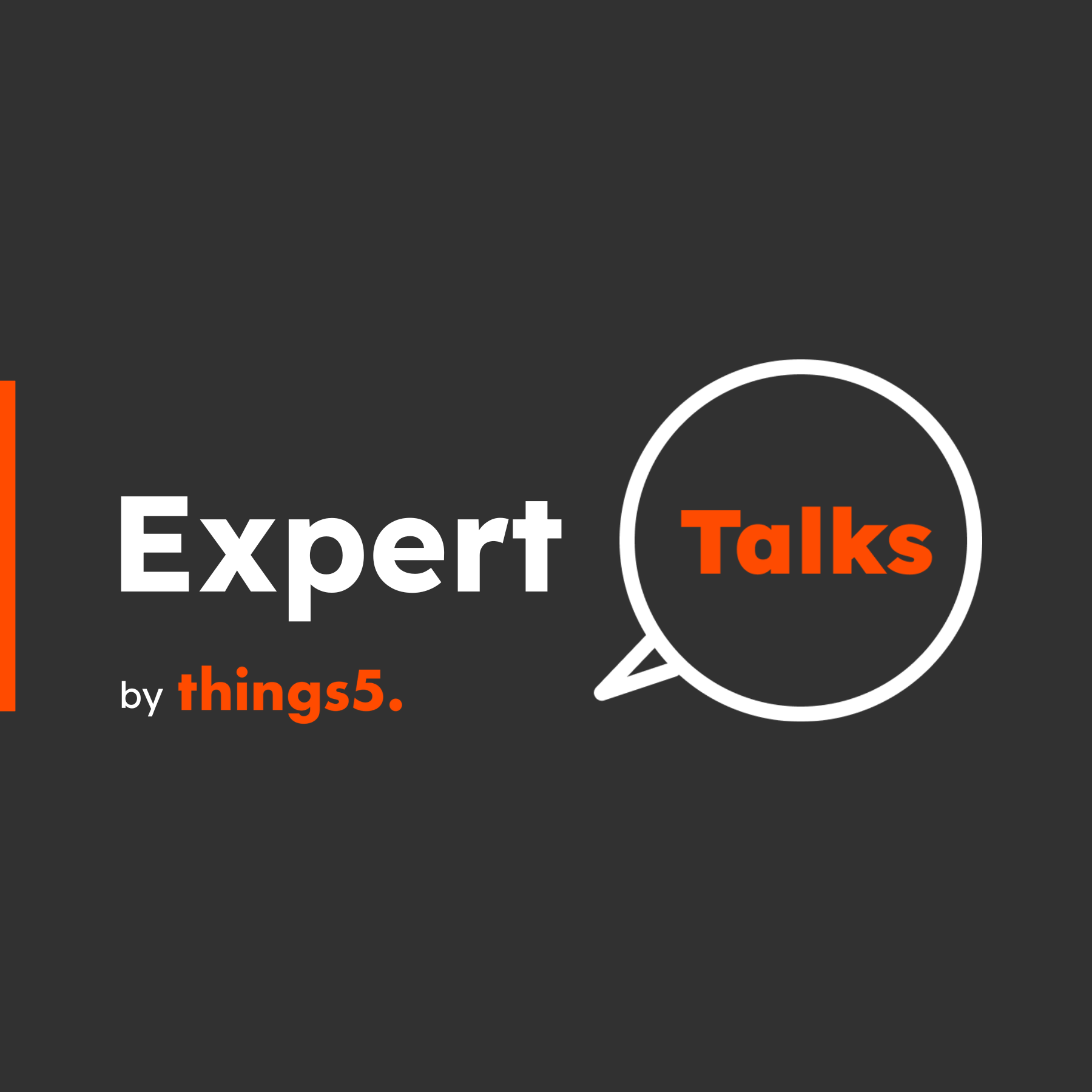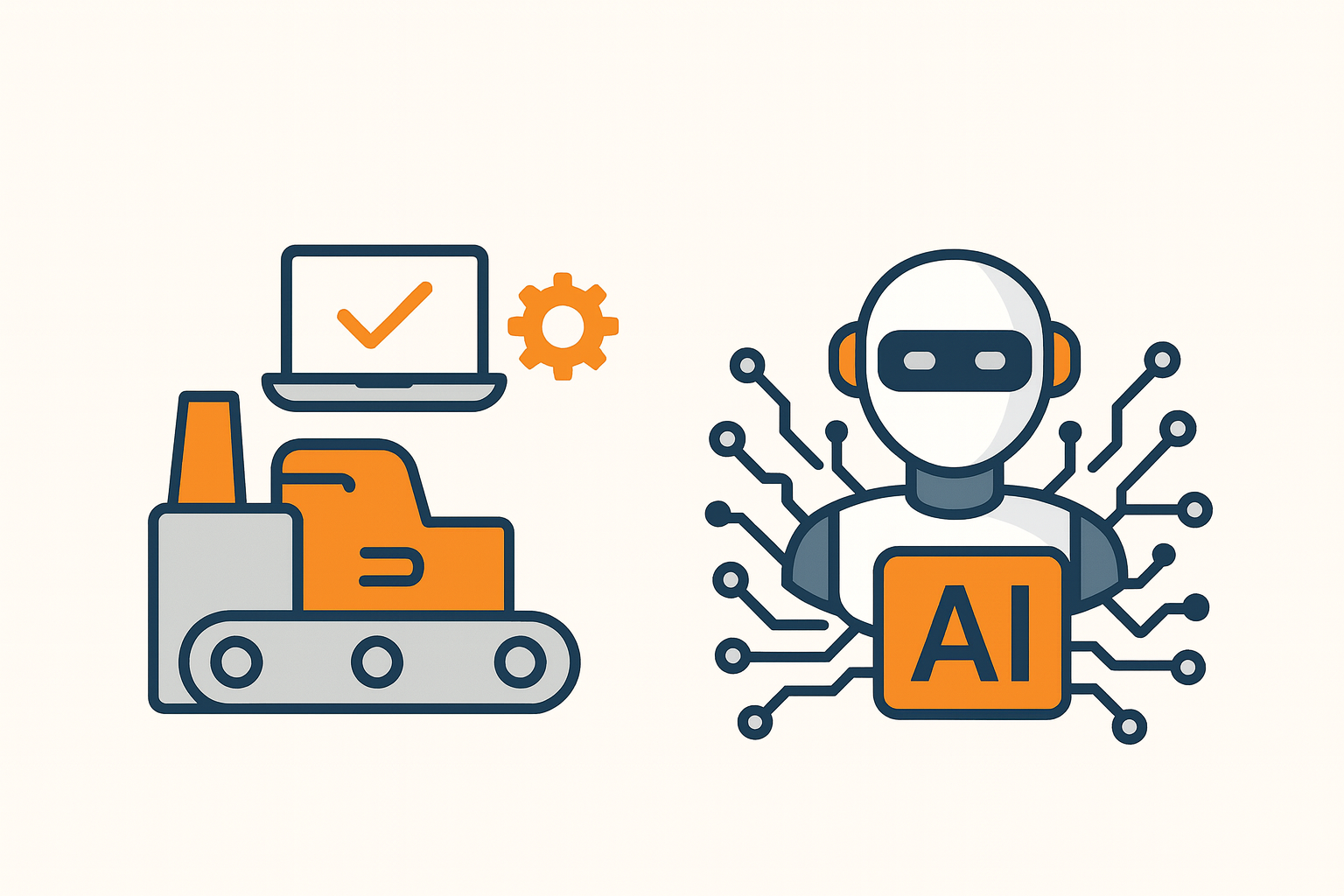Expert talk with Davide Benassi: Change mindset, not just technology

Real innovation is about culture, strategy, and people

Sara Strizzolo
2nd July 2025
Software-driven innovation isn’t about adding software to existing products. It’s about changing how those products are conceived, how they work, and how they evolve over time. It’s the shift from static objects to intelligent systems that can adapt, generate new revenue streams, and improve the user experience in unexpected ways.
In this interview, Davide Benassi, IoT & UX Manager with experience at Vimec, LiftingItaly, and Immergas (active in HVAC and personal mobility), explains what this trend means for manufacturing.
Through practical examples, Davide shows us why the real value of this transition is not just technological but strategic: from new business models to new skill sets, and a radical shift in mindset toward failure and continuous improvement.
Hi Davide, welcome, and thank you for joining us. Let’s start with a couple of questions. What are you currently working on, and what’s your background?
I work on IoT applied to products and user experience. I have a degree in electronic engineering, and from my very first project, I’ve always worked on both the hardware and software specifications, ensuring connectivity was included as a core requirement.
Throughout my career, I’ve had the chance to both follow product development and see how people actually use these products in the field. This made me realize how much a different user experience can significantly shape the perception of a product.
Let’s get into the heart of software-driven innovation. What’s your take on this trend, and how has it changed since you started?
I see it as a trend that will revolutionize how we design, build, and use products, even if it’s still evolving.
Take a simple example: the
kitchen hood. A few years ago, it was an ugly object often hidden in a cabinet, with a basic switch to turn on the light—often poorly illuminating the workspace. Thanks to
IoT, kitchen hoods have become
essential design elements. They now provide adaptive lighting based on presence, can connect with other appliances like the hob, and know when to activate, how to operate, and at what intensity, based on what you’re cooking. They can also integrate with advanced building management systems in both residential and commercial settings.
This is how we’ve moved from a basic hood with no software to a product where software is now central to its development and design.
Even though it’s early days, what concrete impact do you see?
Software-driven innovation will have a strong impact on manufacturing, both in design and in how products are developed and produced.
Products can evolve functionally over time through software updates, enabling much longer lifecycles, which is a clear sustainability benefit.
On the revenue side, it shifts the focus from a one-time sale to ongoing services, which means companies can move some resources from hardware design to software development.
If the value shifts from the product to the service, companies can use
more generic, less customized hardware, reducing the costs of bespoke components and leveraging widely available, scalable solutions.
From your experience, what are the first signs that push a manufacturing company to invest in software as added value?
It always starts with the market. When customers become more interested in functionalities, user experience, and how a product meets their needs, that’s when change becomes necessary.
Take a boiler or a hot water system. One option is a device that simply turns on and off when the user feels cold or hot. Another is to offer an intelligent system that detects presence, monitors indoor and outdoor temperatures, evaluates energy costs, and adjusts operations accordingly. The result is optimized energy use and better user comfort.
This is the difference between a traditional system and a smart, connected system driven by software.
Once a company decides to take this approach, what does product development look like in practice?
The design process changes completely, starting with how product requirements are defined. The old model, where technical or R&D teams receive specs from sales and deliver a product within cost, no longer applies.
Today, the goal is to develop products that enable services, which in turn generate new revenue streams. This requires bringing in new roles that can gather needs and insights from inside and outside the company and turn them into a shared design vision. It’s not just about mediating; it’s about acting as a strategic link between business, technical teams, production, and the end user.
Products are now designed to generate
services, making it essential to bring all these perspectives together from the start so that everyone feels ownership of the product and contributes to its improvement.
With gradual feature releases, I imagine validation testing starts immediately. How does this process work?
Exactly. After the first development phase is released, the next steps are already planned - but can be adjusted along the way.
Once the initial release is out, feedback is collected from the market and field use. If everything works as planned, you move to the next steps: development, field testing, final validation. If not, you revise. This approach allows you to adjust direction throughout the product lifecycle.
This agile approach challenges the negative perception we have of failure. In this context, failing early is a positive thing. How does this perception shift in manufacturing?
It changes completely. With a waterfall approach, you develop a product in sequential phases. You either succeed or fail.
With an iterative approach, you enter a mindset of continuous improvement. The concept of “failure” doesn’t disappear but is reframed: you’re
not creating an unchangeable product, but
a system that can evolve over time.
Could you share an example of an application that has successfully changed a process or improved product usability?
Yes, a clear example comes from our latest products, where we’ve integrated a dedicated app. Previously, during production and testing, we had to use expensive external tools for checks, and diagnosing issues was difficult.
Now, with a
software-managed, connected product rich in data, the app
guides testing, assists installation, and supports both the user and the technician in troubleshooting and issue resolution. This has completely changed how we interact with the product.
Speaking of
apps, what kinds of services can be offered through them?
Digital services are closely tied to product experience. For end users, the goal is to help them use the product easily and independently, guiding them during issues to avoid unnecessary support calls. This reduces product downtime.
For technical support, the app can connect to cloud services for troubleshooting, remote monitoring, and device configuration. Compared to traditional products that rely on complex manuals, having fast access to the right information is the real added value.
The customer perceives the product as premium, significantly increasing its perceived value.
Connectivity also improves perception, processes, and user experience. How well do businesses understand and value these benefits?
Initially, it’s hard to assign concrete value to data and connectivity. But looking at use cases helps clarify the value.
For example, in a fast-paced world, if someone needs to book flights, trains, hotels, and taxis separately, it takes a lot of time. An integrated service that automates this saves time, which people are willing to pay for.
Another example: people now prefer renting products to avoid worrying about failures, wanting products to always work at 100%. To offer this, products must be connected so companies can intervene before a failure occurs, monitoring real-time status and lifecycle data. Without connectivity, this wouldn’t be possible.
The real value of connectivity lies in enabling services that didn’t exist before.
For the business side to justify these investments, KPIs are inevitable. Which metrics and timelines are typically used to evaluate ROI?
Common KPIs include time savings in technical support (internal and external) and NPS (Net Promoter Score), as connectivity radically changes how customers perceive the product.
Connected products can adapt to user needs, providing a more personalized experience. Marketing and design teams also save time by accessing real usage data, which shortens the learning curve for future product development.
How challenging is it for businesses to define benchmarks to decide if an initiative is validated?
It’s quite challenging, as this has not been approached systematically before.
You need to start with a hypothesis, test it, and refine it over time. Internal and external tests are conducted to identify “idle times” and see how these can be recovered through new services. Based on measurable results, you then adjust and optimize your approach.
Generally, it takes about
two to three years to recoup investments related to these services.
From a business perspective, which models best capture the value of IoT and are easier for companies to adopt?
Freemium models can work well initially to let customers experience the product and its services, especially when there’s no historical data on the service’s value.
Once adoption grows, a satisfaction-based model becomes effective, particularly for services with connectivity and maintenance costs requiring recurring revenue.
In some sectors,
pay-per-use models can also work, especially where products aren’t used continuously, making usage-based billing more attractive than fixed subscriptions.
Over the past two years, technology has rapidly evolved with the rise of generative AI. How do you see AI influencing product development and the evolution of software-driven innovation?
Generative AI is a huge opportunity for the next generation of products and services. It can transform the way we interact with products, adding a “human” component that allows people to communicate with a device much like they would with another person.
Where a product once felt like an incomprehensible “black box,” it now becomes an
object you can interact
with easily, making it simpler for both users and technicians to engage with it.
Last question. What advice would you give a manufacturing company looking to invest in software, something you wish you had known early on?
I’d advise companies to assess, from the start, whether their people are truly ready for this journey. It’s not an easy process, so it’s critical for companies to analyze the impact of change carefully,
involve people early, and prepare them through proper
training.
That’s an important point. You’ve highlighted something often underestimated: people. It’s essential to stop seeing a software-driven approach as just a technical cost and start viewing it as a strategic investment where people’s engagement and preparation are the true drivers of success.
Davide, thank you for your time. It was a pleasure listening to you, and your insights will be valuable for all companies exploring or transitioning to a software-driven approach.
👉 Want to discover how ready your company is to integrate AI into products?
Complete the AI Readiness Assessment (it will only take a few minutes)



